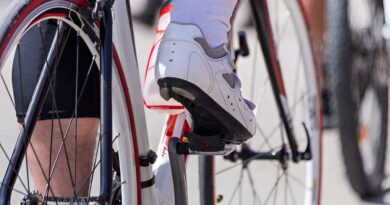How to Raise Handlebars on an Old Bike?
Old bikes are often strong and reliable. But they can feel uncomfortable if the handlebars are too low. This can be a bigger problem for tall guys, large men, or heavy riders. Low handlebars can cause back, neck, and wrist pain. Luckily, raising the handlebars is not too hard. You only need a few tools and some time. This guide will show you how to do it, step by step.
Why Raise the Handlebars?
Comfort is the biggest reason. When handlebars are too low, you bend forward too much. This puts stress on your arms and back. For tall guys or big guys, this can be painful after just a few minutes of riding. Raising the handlebars helps you sit more upright. This takes pressure off your hands, shoulders, and lower back.
Another reason is control. If you are a heavy person or a larger man, better posture helps with balance. When you sit straighter, your weight spreads evenly. This makes the ride smoother and safer.
Types of Handlebar Stems
Before you begin, it’s good to know what kind of stem your old bike has. Most old bikes have either a quill stem or a threadless stem. A quill stem is common on vintage bikes. It goes inside the frame’s steering tube and tightens with a bolt at the top. A threadless stem clamps around the outside of the fork tube and uses spacers to adjust height.
If you’re a heavy rider or a tall guy, knowing your stem type helps you choose the right method.
Tools You’ll Need
You don’t need a big toolbox for this job. A basic set of Allen keys will work for most bikes. Some older bikes might also need a wrench or an adjustable spanner. Having a little grease nearby is helpful too. It keeps parts from rusting and makes them easier to remove later.
How to Raise a Quill Stem
A quill stem is easy to spot. It goes down into the bike’s fork and has one bolt on top. Start by loosening this bolt. Use an Allen key and turn it counterclockwise. Don’t remove it completely. Just loosen it enough that you can move the stem.
After loosening the bolt, gently twist the handlebars left and right. This can help break any rust or dirt seal. If they don’t move, lightly tap the bolt with a rubber mallet or a block of wood. This can free the wedge inside the stem.
Once the stem moves, pull it upward. You can only raise it to the “minimum insertion line.” This line must stay inside the frame for safety. For big guys or tall riders, raise the stem as high as it safely goes.
When you’re happy with the height, tighten the bolt again. Make sure the handlebars are straight before you fully tighten. Test the bike by pressing down on the bars. If they don’t move, you’ve done it right.
How to Raise a Threadless Stem
Threadless stems are a bit different. They are usually found on newer bikes, but some older bikes may have them. These stems clamp around the fork steerer tube. The height is changed by moving spacers above or below the stem.
Start by loosening the bolts on the side of the stem. These are called pinch bolts. Then, loosen the top cap bolt. This will let you slide the stem off the fork tube.
You’ll see some spacers under the stem. To raise the bars, move some spacers from below the stem to above it. This lifts the height slightly. For tall guys or large men, even a small lift can make a big difference.
Once the spacers are in place, put the stem back on. Tighten the top cap bolt first. Then tighten the side bolts evenly. Make sure the handlebars line up with the front wheel before fully tightening.
Using Handlebar Risers or Stems
If the normal adjustment doesn’t raise the bars enough, don’t worry. There are special riser stems made for big guys and heavy riders. These stems have extra height built in. You can also buy handlebar risers. These attach to your current bars and add height.
These parts are strong and safe if installed correctly. Just make sure they match your bike’s size and style. If you’re unsure, your local bike shop can help.
Check Cables and Brake Lines
When you raise the handlebars, always check the brake and gear cables. For a tall guy or heavy person, this is extra important. The cables need enough length to move freely. If they are too tight, they can pull or even snap while riding.
If the cables are too short, you may need to replace them with longer ones. This is a small cost, and it adds safety and comfort. Don’t ride until you’re sure everything moves smoothly.
Test Ride and Final Check
After everything is adjusted and tightened, take a short test ride. Try turning the bars, braking, and shifting gears. Make sure nothing feels tight or wobbly. Listen for clicking sounds or creaks. These can be signs something is loose.
If the bike feels good, you’re ready to ride longer. For large men or big guys, the extra comfort is worth the effort. You’ll ride longer and feel better doing it.
Final Thoughts
Raising the handlebars on an old bike is simple and affordable. It makes a huge difference, especially for tall guys or heavy riders. You don’t need special skills, just a little time and the right tools. Always follow safety lines and check your work.
If you’re a larger man or a big guy getting back into biking, comfort is key. A small change like this can turn an old bike into a joy to ride again. Whether you’re cruising around town or going for a longer ride, your back and shoulders will thank you.
Give it a try. Your old bike might feel brand new again.




